Turning Point
Writer Meg Fox | Photographer Melissa Mellor | Designer Kara Vacca | Architect Rosario S. Mannino, AIA, LEED AP | Location Rutherford, NJ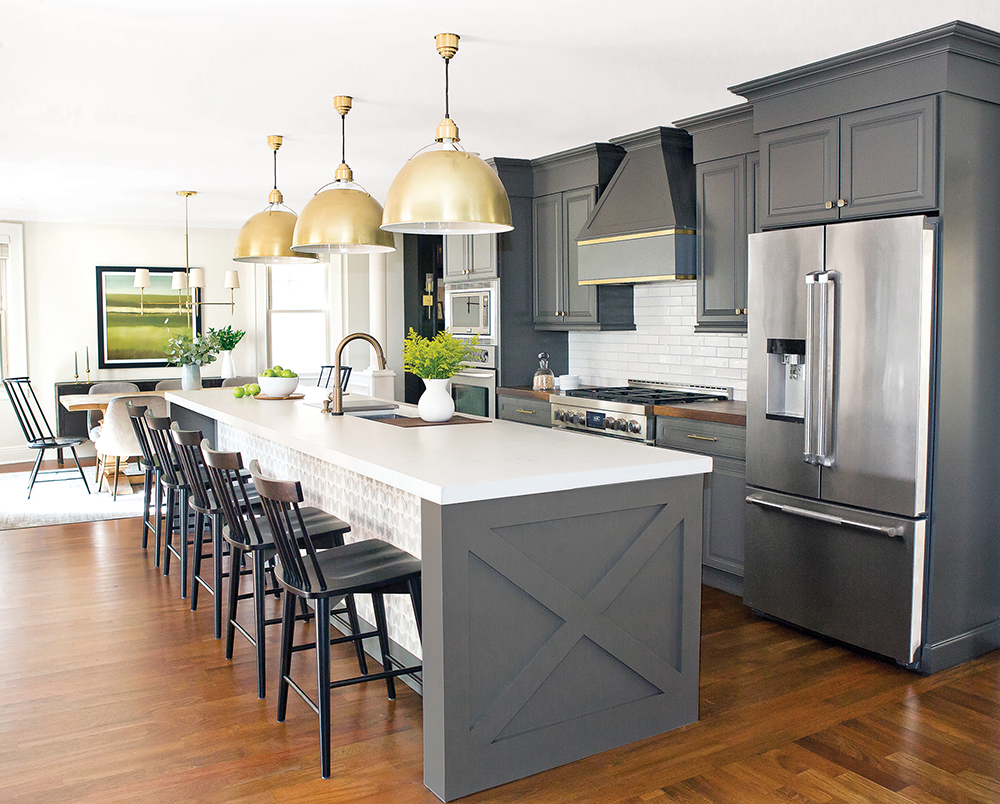
Removing the dining room wall and rotating the island allowed for optimum seating and natural flow in the open floor plan. “Achieving symmetry is always a top priority, so I made sure the range hood, sink and island pendants were on a continuous plane,” designer Kara Vacca says. Cabinets were refinished in “Kendall Charcoal” by Benjamin Moore. Concrete countertops—light gray on the island and a walnut-look along the perimeter—work in the classic neutral scheme.
Removing Barriers Between the Kitchen and Dining Room and Rotating the Center Point Goes With the Flow of a Rutherford Remodel
Times change. Families grow. That’s why this kitchen—part of a first-floor remodel about a decade ago—could no longer keep up with the crowds that often gather here. “We have a blended family now,” co-owner Tina Krokus says. The family includes her ’tween son and husband Ken Byrnes’ four grown children. “The kitchen is the heart of the home and we needed space to spread out” when everyone is together.
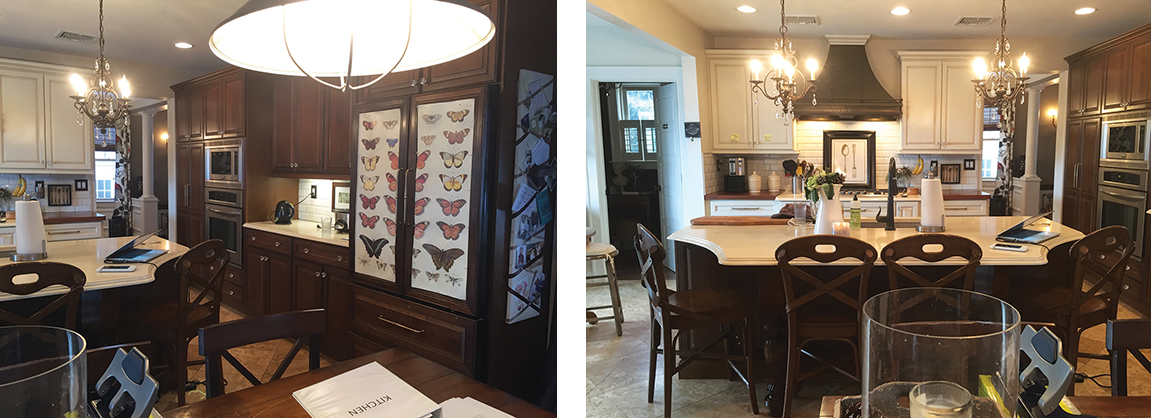
BEFORE | “The existing kitchen was too small for the clients’ needs, and the island did not have enough seats,” the designer says. Behind the range wall is the once-enclosed dining room. BEFORE | Note the butterfly insets on the old refrigerator, a design motif the homeowner wished to integrate somehow into the remodel.
Krokus assembled a team to reimagine the layout and design: Rosario Mannino, principal of RS Mannino Architecture + Construction in Rutherford, New Jersey and New York City, and interior designer Kara Vacca, founder of Kara Theresa Interiors LLC in Monmouth County, New Jersey.
“Kara and I worked together on the layout to create the best flow and efficiency of the space,” says Mannino, a member of the American Institute of Architects and an LEED Accredited Professional. This meant tearing down the wall that separated the kitchen from the rarely used dining room. Not only would the layout expand entertaining options, it immediately increased the natural light pouring into the kitchen and neighboring rooms.
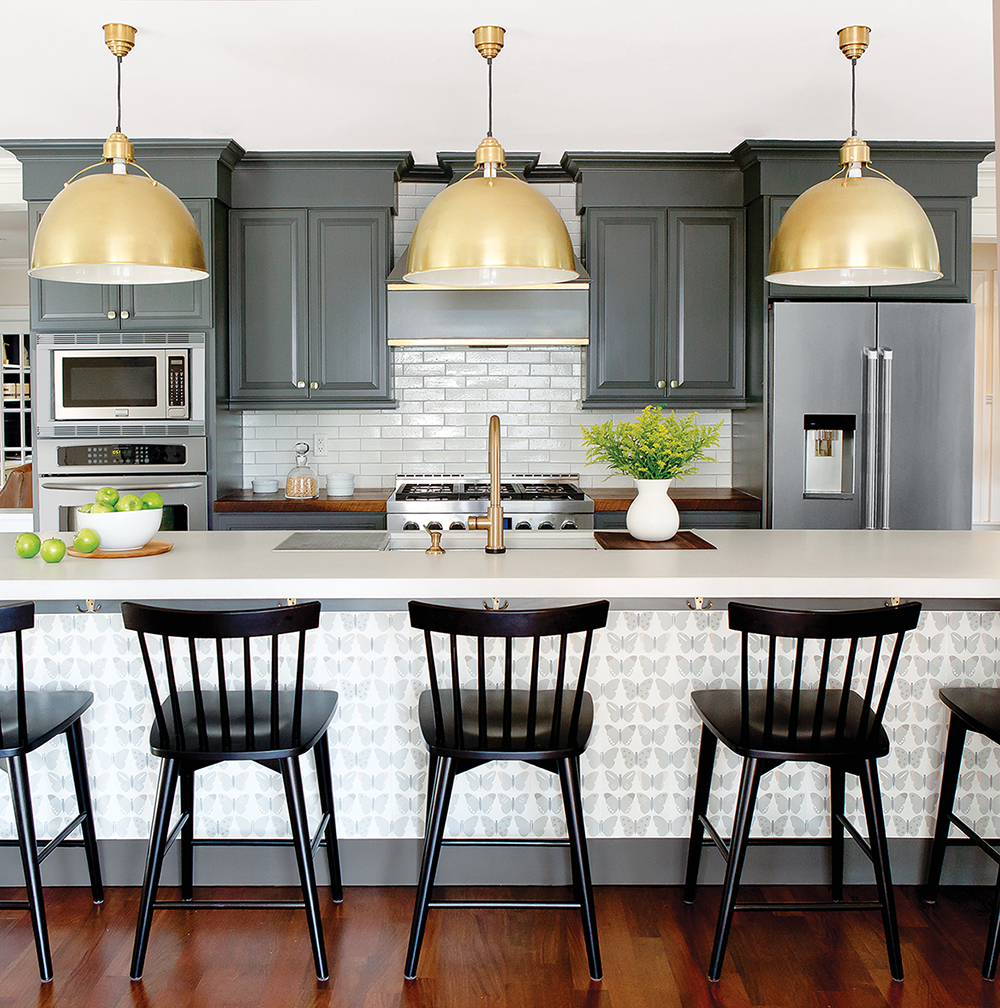
“To me, butterfly motifs are timeless,” homeowner Tina Krokus says, so they are featured in custom concrete tiles that line the 13-foot island. Hooks for pocketbooks, just what you’d hope to see at a favorite bar, also run the length of the island. Integrated into the sink is a wood cutting board and drying rack. The hood’s brushed metal insets play up the brass tones in the oversized pendants and new hardware.
Says Vacca: “My goal was to make these rooms one big entertaining space where every square inch was livable and inviting yet sophisticated and chic.” To achieve more counter space and seating, Vacca suggested turning the whole kitchen so the island was parallel with a new range wall. “Achieving symmetry is a priority, so I made sure the range hood, sink and island pendants were on one continuous plane,” she says. Shifting the room’s center point would also allow her clients the ability to face their guests while preparing meals and take in beautiful backyard views.
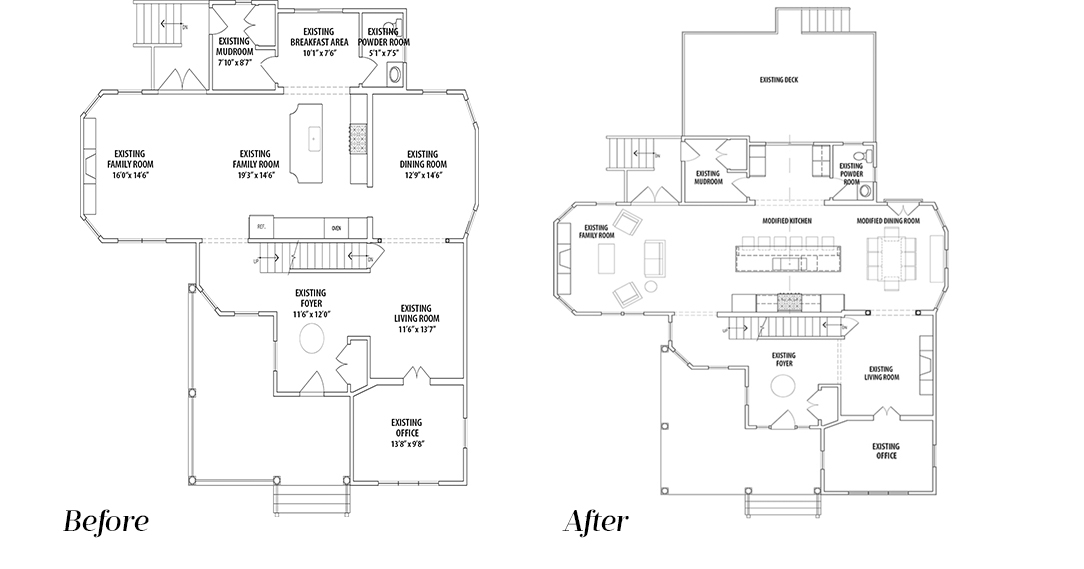
Considering the replacement costs associated with new appliances, countertops, flooring and other materials—and the fact that the existing cabinets were still in good shape—the homeowners opted to retain the existing cabinetry and supplement where needed. “It was a design challenge to make it work,” Mannino says, “but we added a few custom woodworking pieces to elevate the cabinetry quality, such as adding X-braces to the island ends for more of a custom look.” Cabinets were then refinished in “Kendall Charcoal,” a deep gray tone from Benjamin Moore. “It’s a moody, sexy color that looks great with the new solid brass finishes, Krokus says.
For contrast, Vacca paired concrete countertops—light gray on the island and a walnut look along the perimeter—with a glossy brick backsplash. “The matte gray mixed with the wood-look adds the perfect organic touch to this space,” she says.
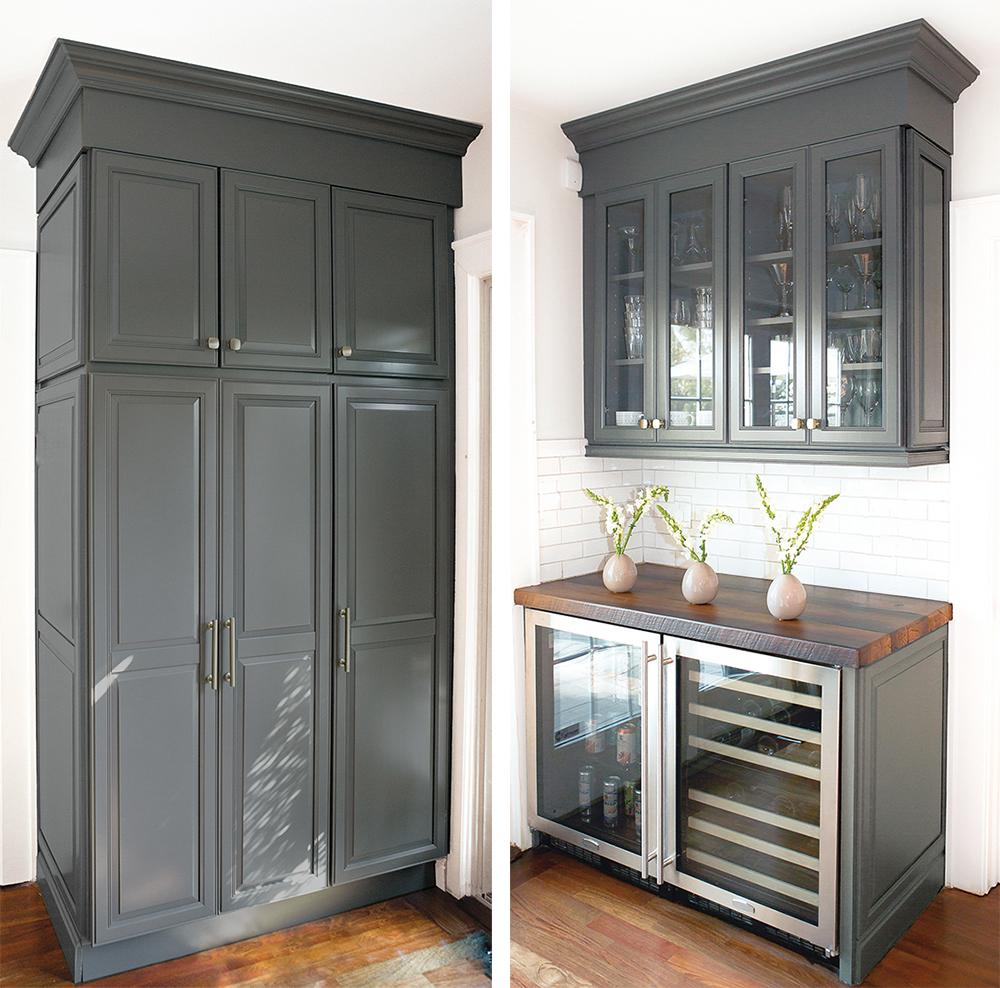
A tall pantry cabinet and beverage station flank an entrance to the kitchen through sliding glass doors.
While the look is timeless, it is also highly personal, reflecting the homeowner’s love of travel, typography and butterfly motifs. “Knowing how much my client loves butterflies, I wanted to be sure to incorporate something special yet custom and integrated that she could admire every day,” Vacca says. The result: custom cement tiles in a butterfly pattern along the base of the island for a “subtle wow factor.”
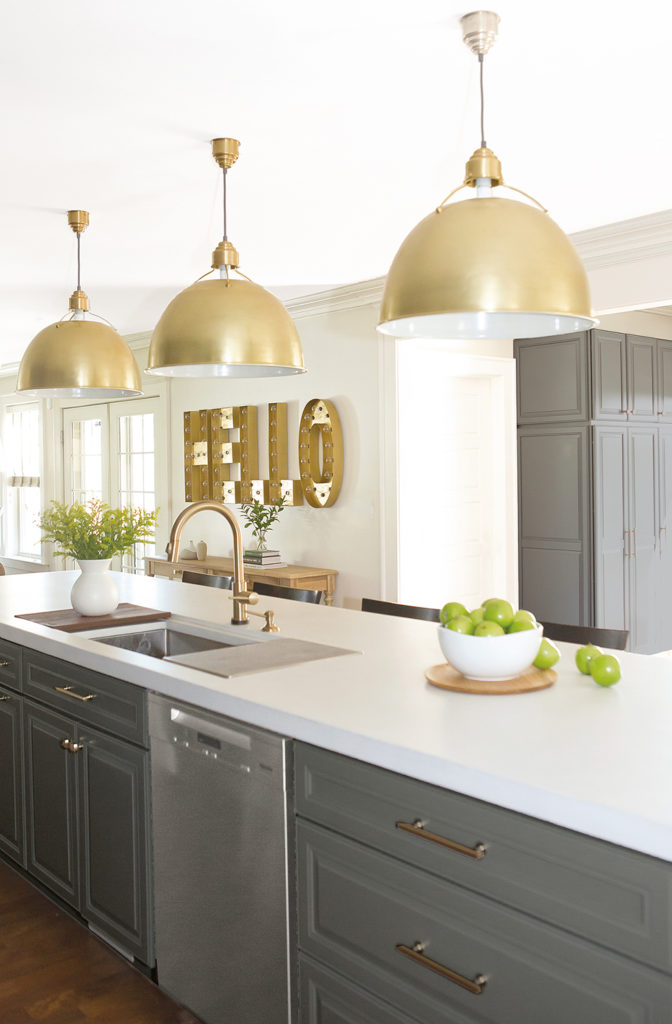
The homeowner sourced the sizable brass sign on Etsy.com. “I told Kara there had to be some element of signage that represents my love of typography,” Krokus says. This one has everyone at hello.
As Krokus sees it, “Design is a compilation of everything we experience in life.” Examples in the kitchen redesign include oversized brass pendants like those she admired in a boutique hotel in Paris and the walnut-look of the concrete countertops. Whether in Paris, London or New York City, “I always look for a hook to hang my pocketbook” when visiting her favorite bar or other establishment. So why not incorporate this fun touch on the island, she thought. As for the oversized “Hello” sign, an Etsy.com find that makes her smile, “I told Kara there had to be some element of signage that represents my love of typography.”
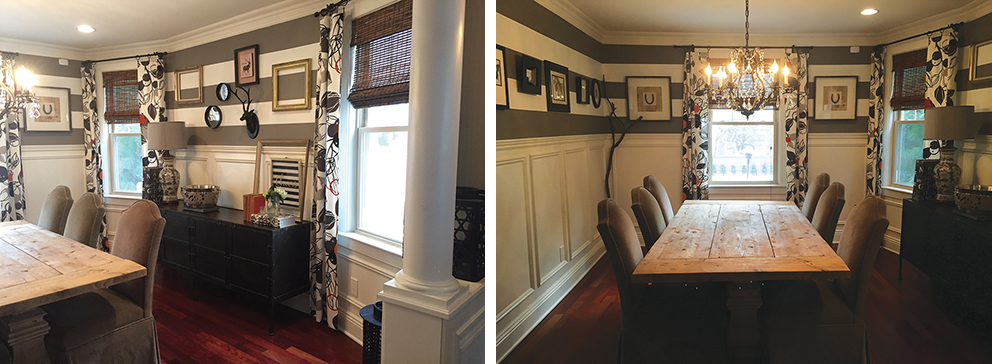
BEFORE | Closed off from the kitchen and neighboring rooms, the former dining room “was barely used,” Vacca says.
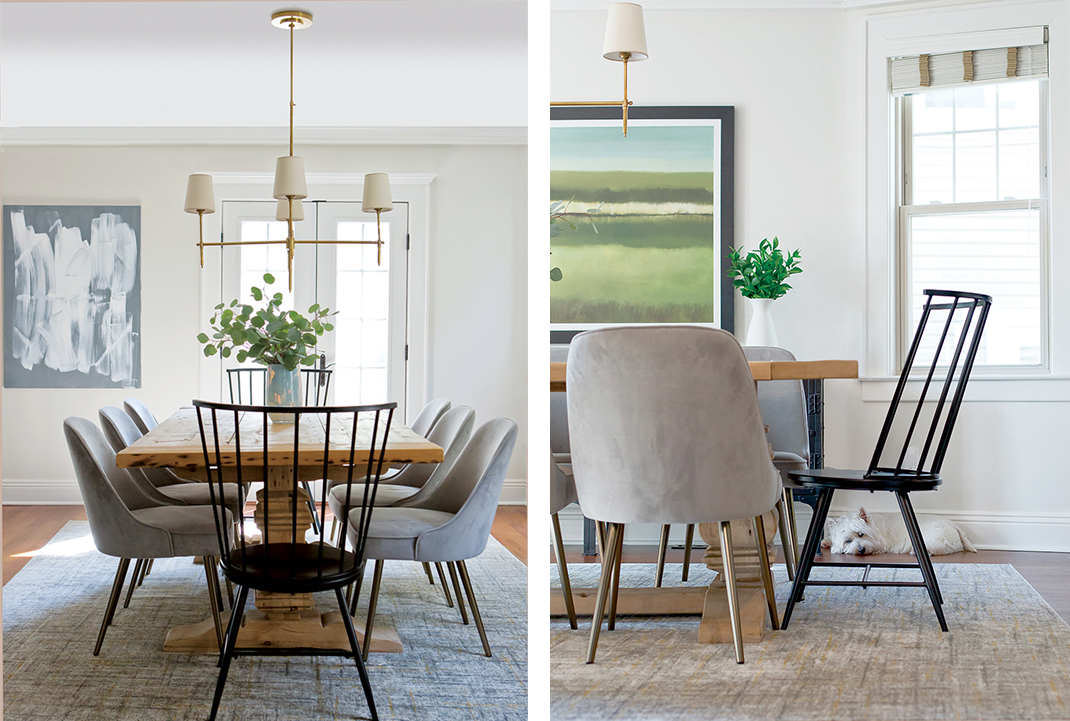
“Transitional with a modern twist” is how Tina Krokus describes the dining room makeover. More streamlined side chairs replaced bulkier versions, but the table and sideboard remained. New French doors, a game changer, swing open for fresh air and views. Drapery panels were replaced with simple blinds that blend with adjacent rooms. George, the homeowners’ beloved 15-year-old West Highland White Terrier, relaxes in the light-filled room. Popular in his heyday as a doggie model for print ads, “somehow he always ends up in photos,” Tina Krokus muses.
Other favorite elements of the redesign: the light that now streams into the space with the removal of the wall between the kitchen and dining room and the “massive island” that can seat up to six people. “I’ve always had a passion for design,” Krokus says. “It’s my thing.” But “when it comes to scale and access to resources, that’s where Kara came in,” nailing all the features she wished to incorporate and maximizing the layout. “It was brilliant.”
Building Support
When the Wall Comes Down
“The major construction challenge was keeping the existing ceiling height and rerouting all of the electrical, plumbing and HVAC work. We added a large steel beam sandwiched between the existing structure without compromising the tile work directly above in the bathroom.”
Architect Rosario Mannino
